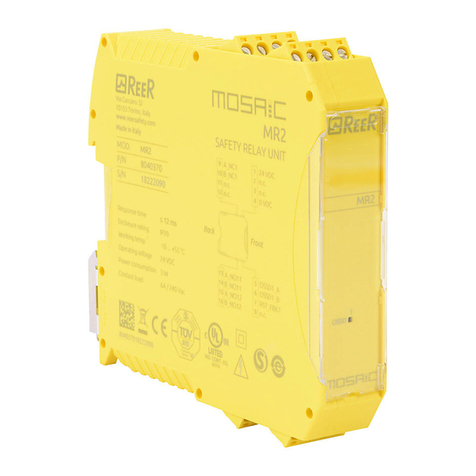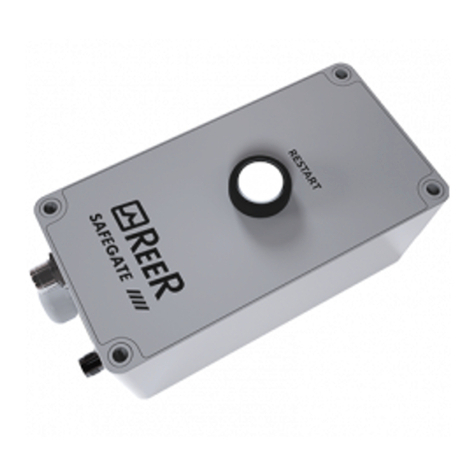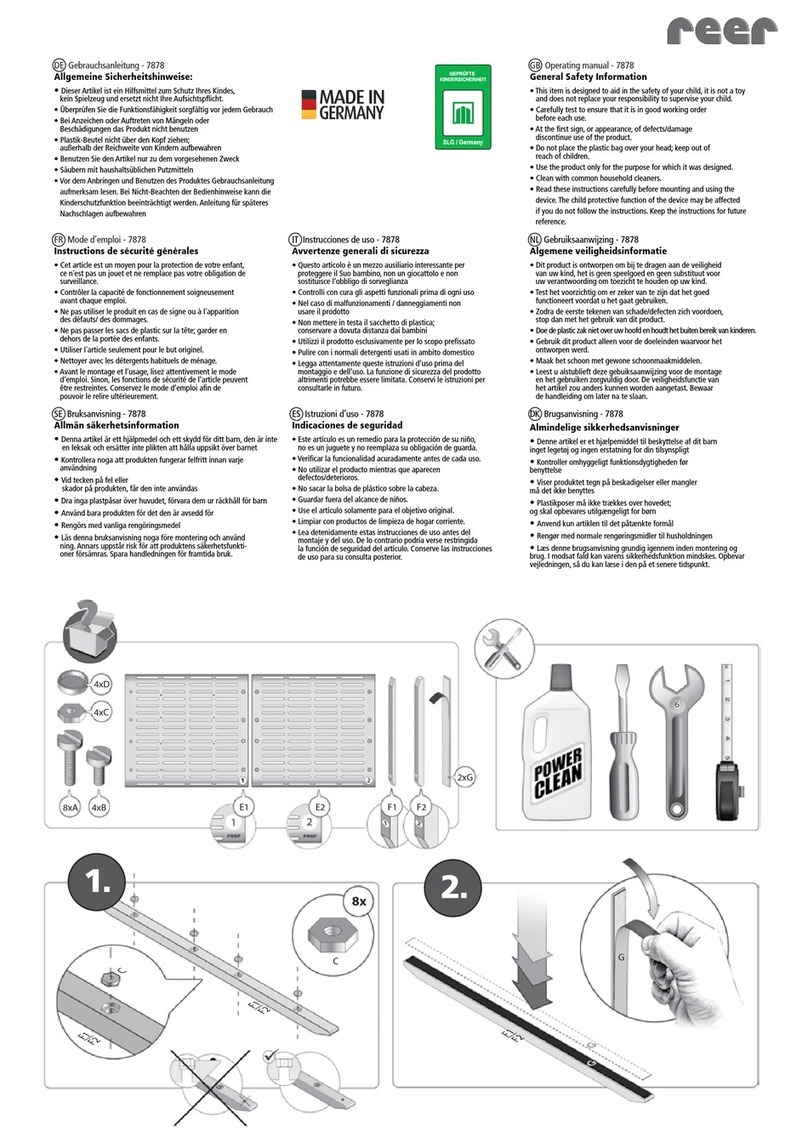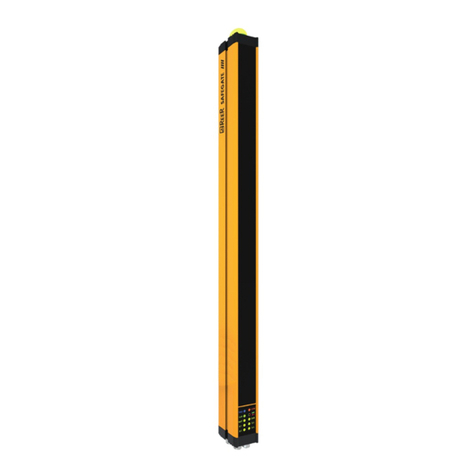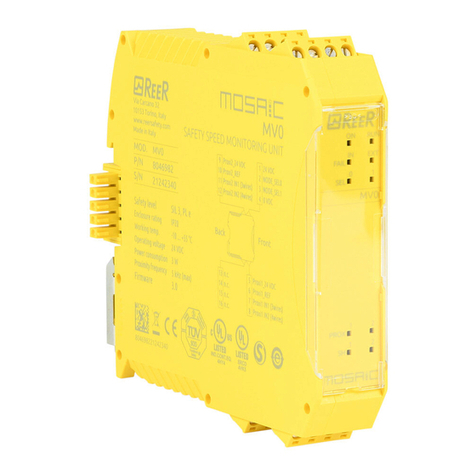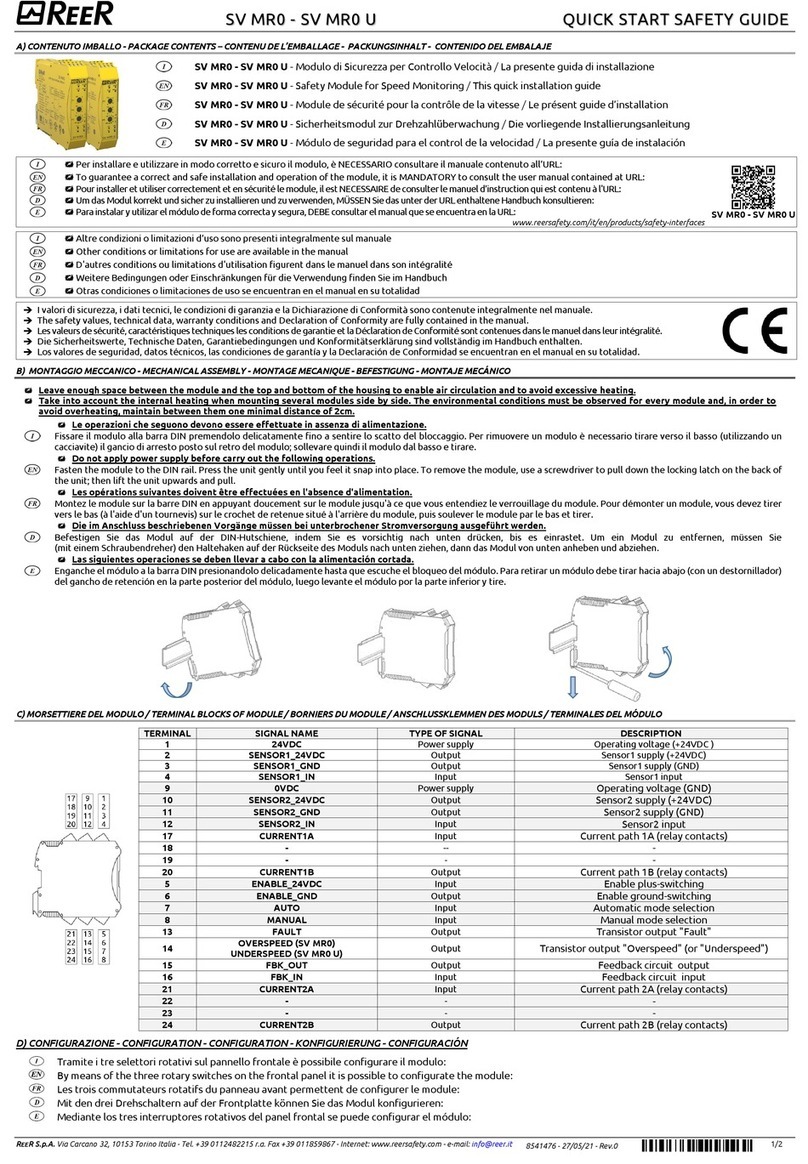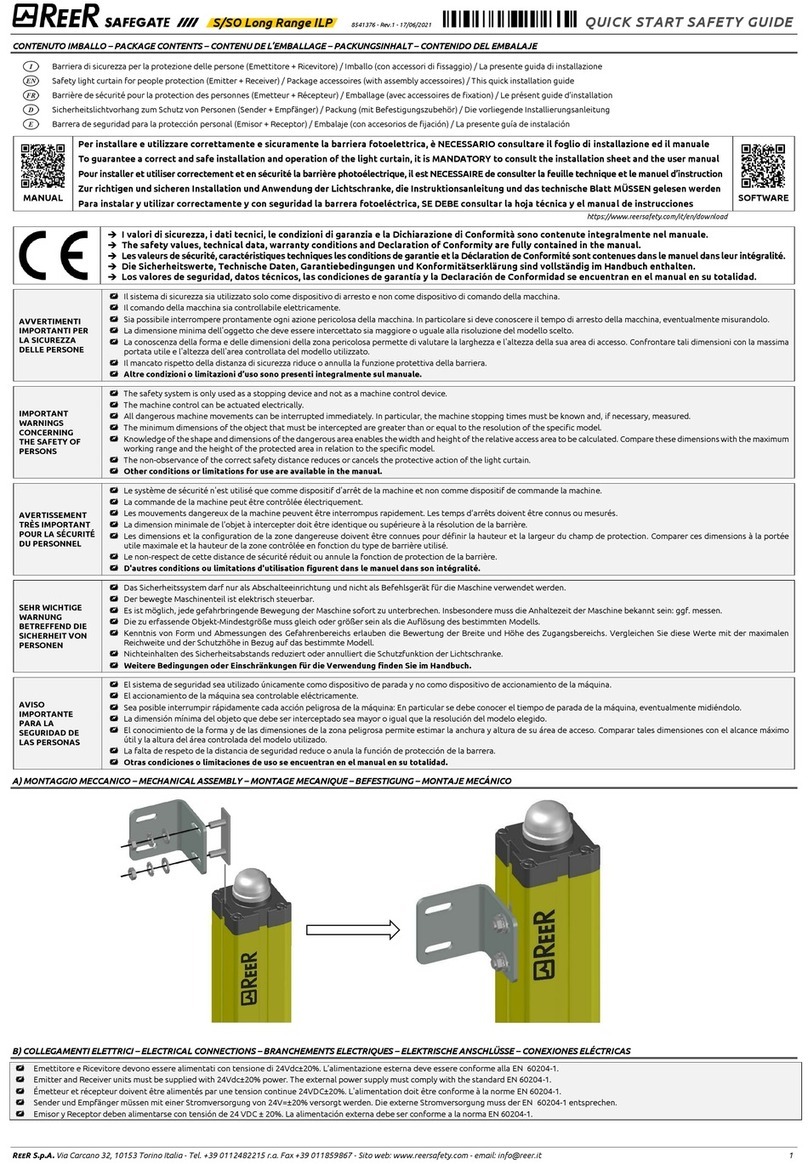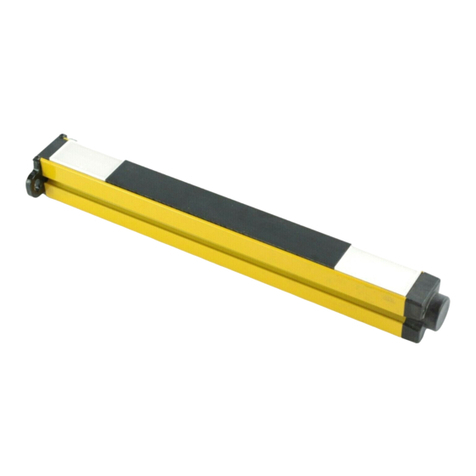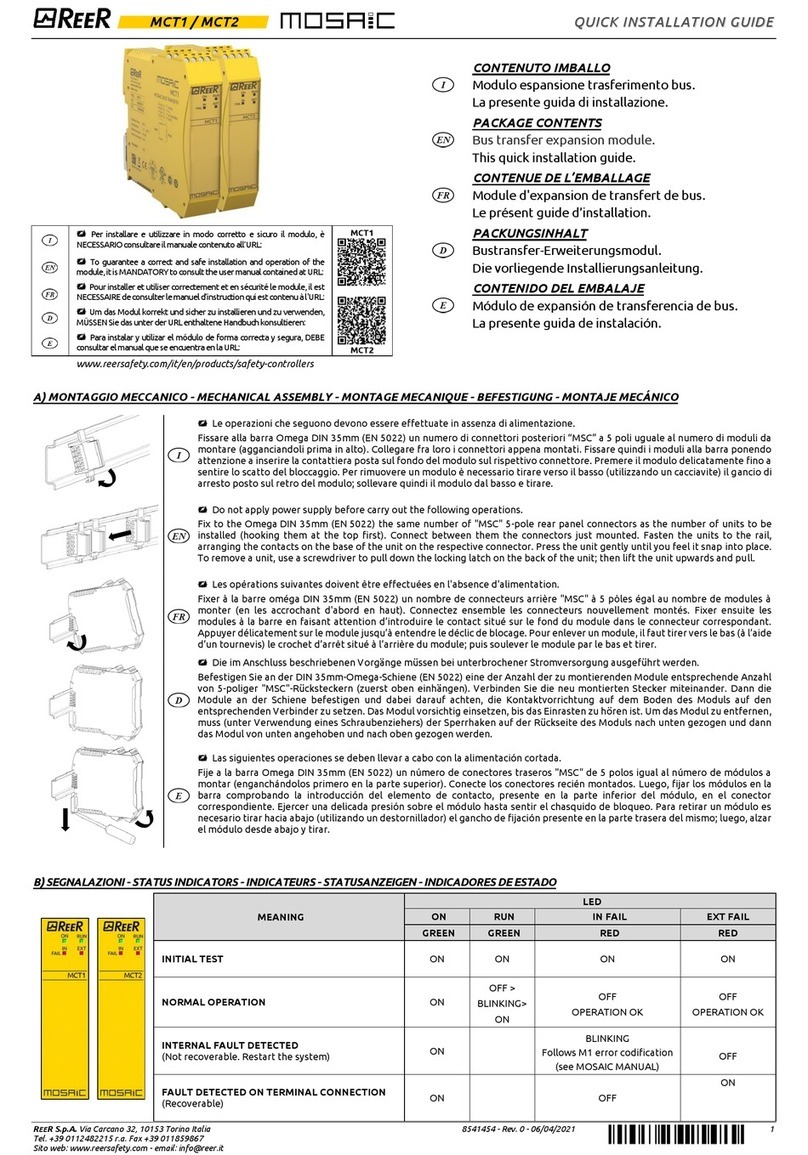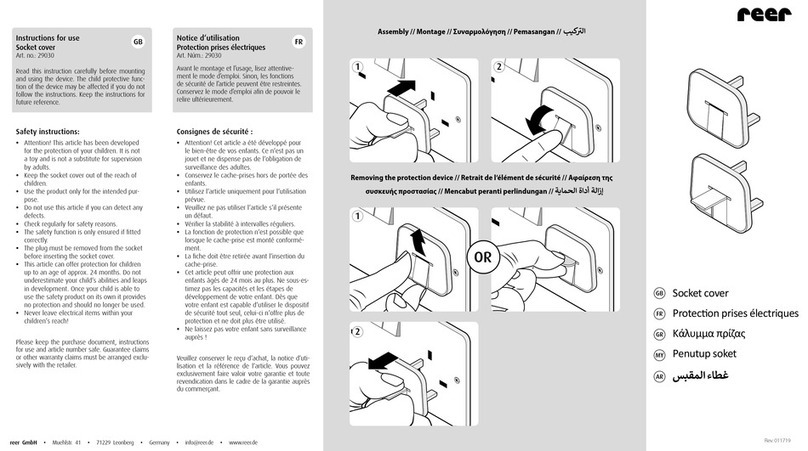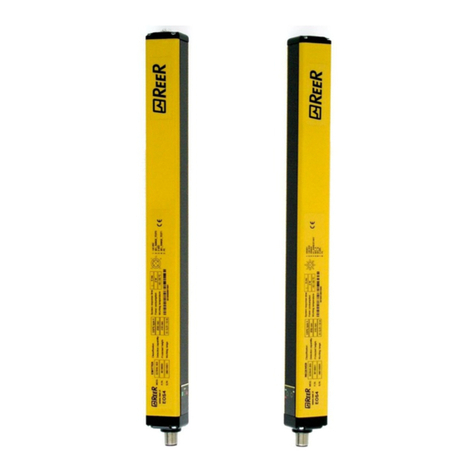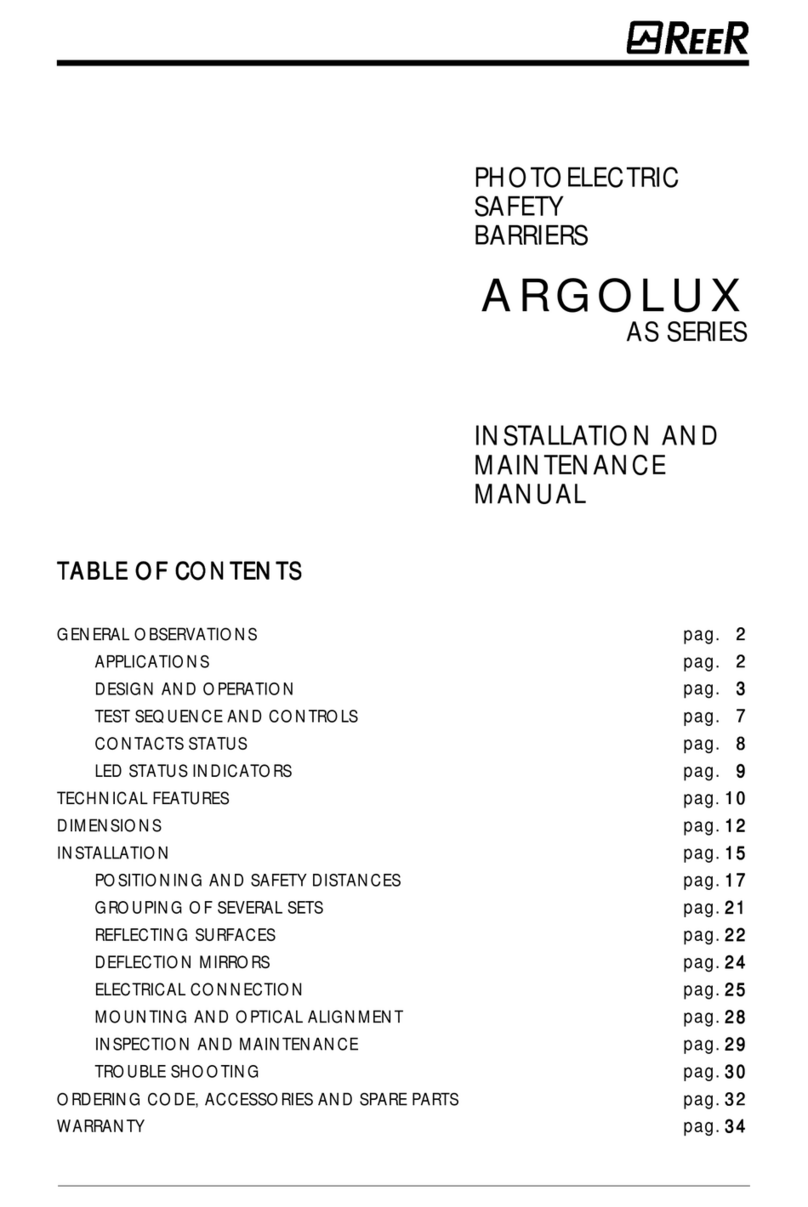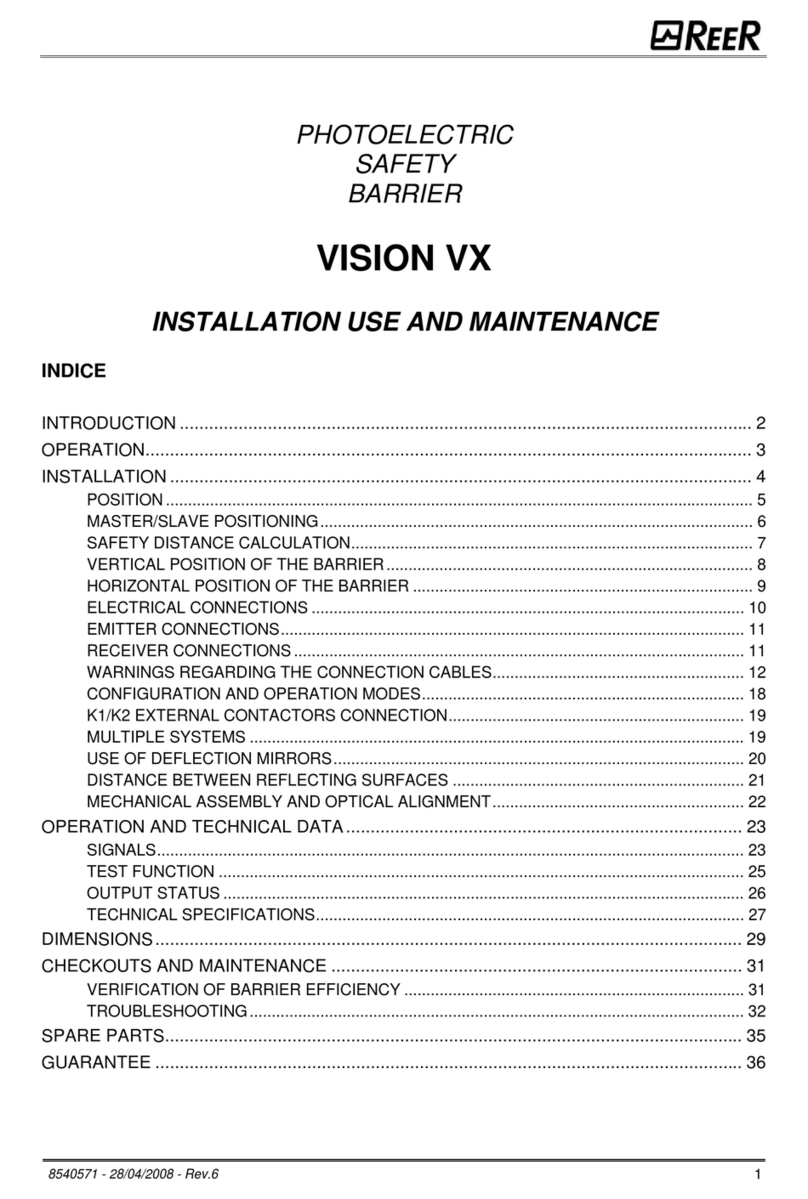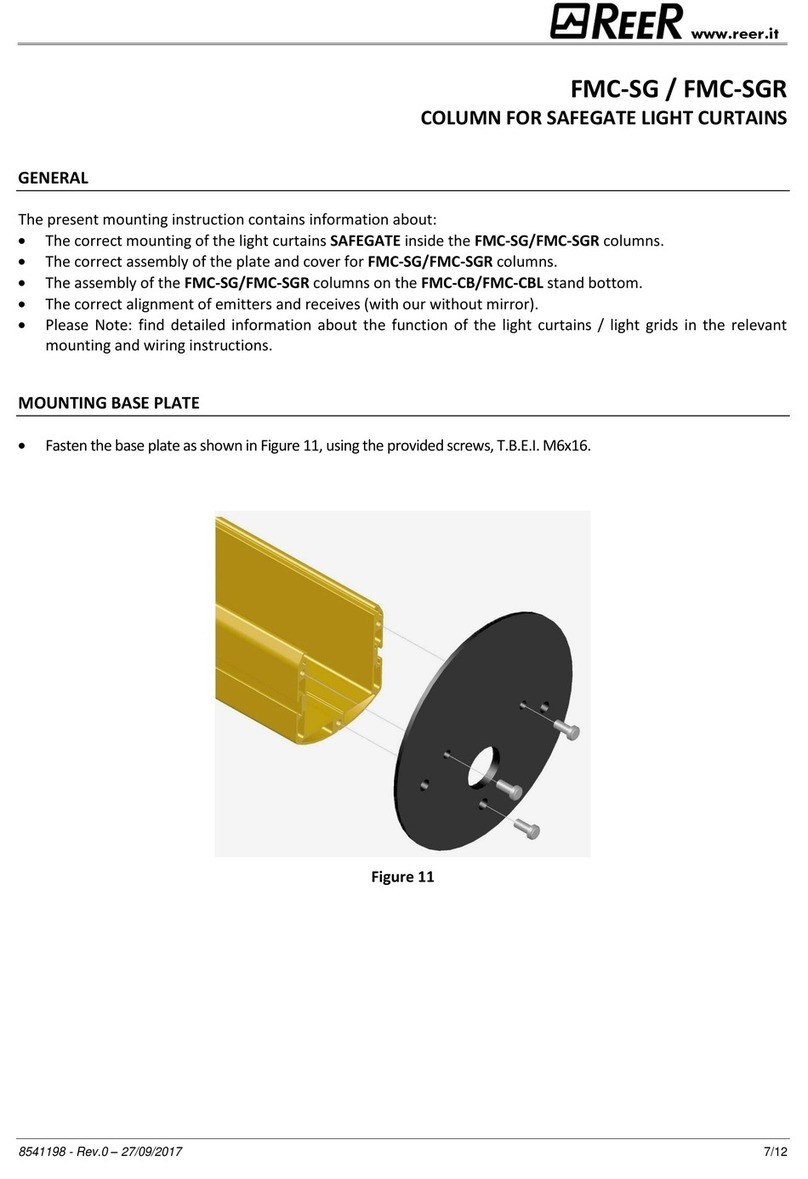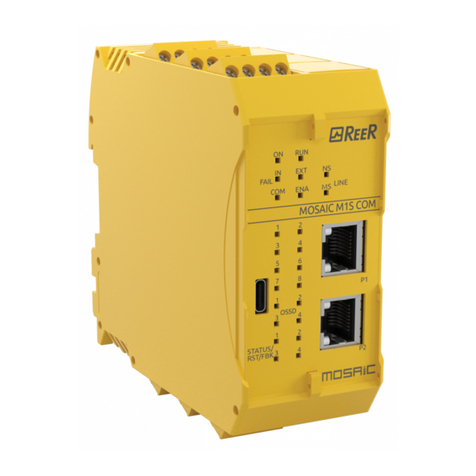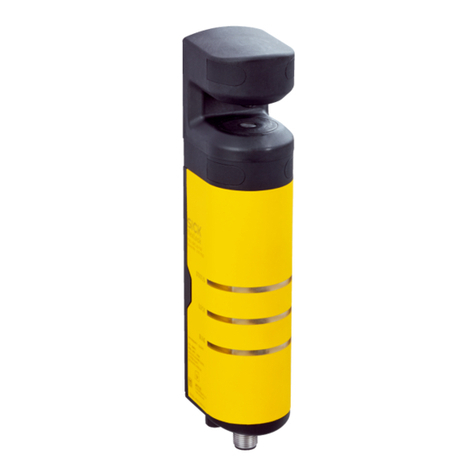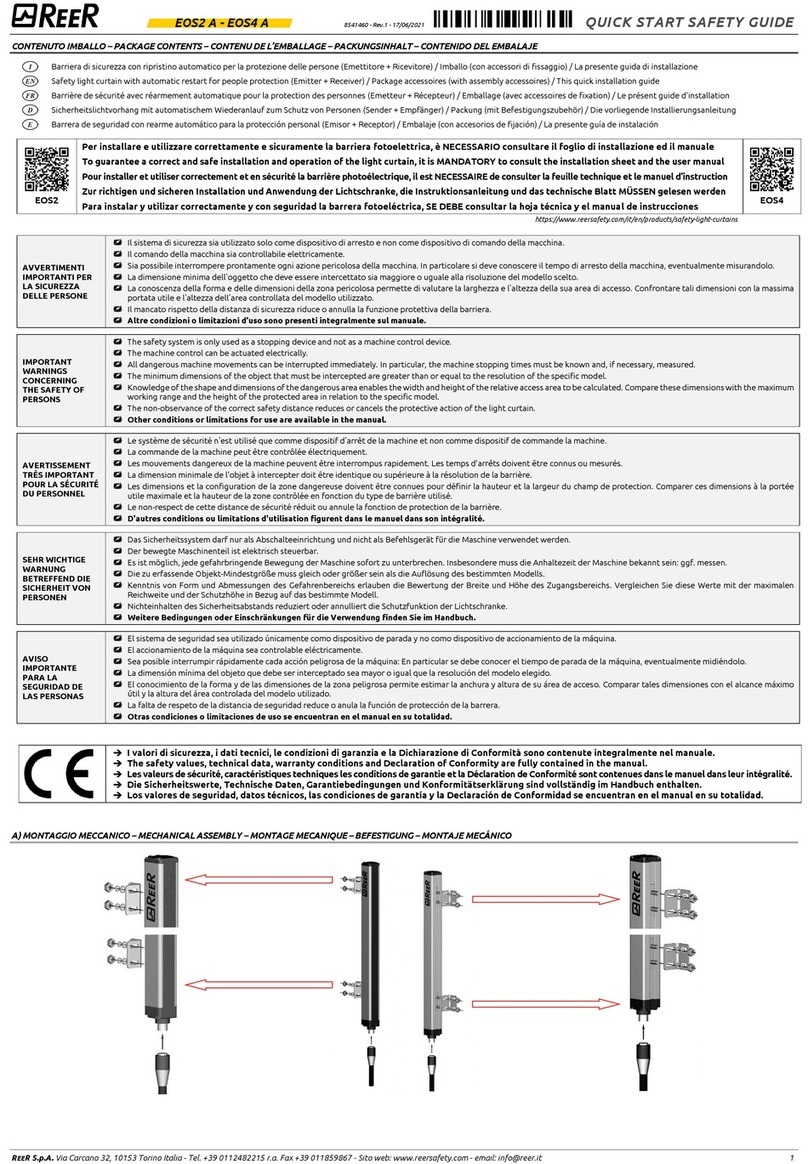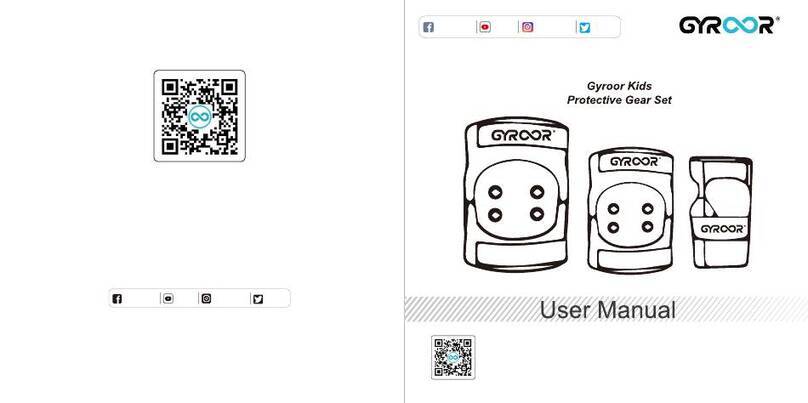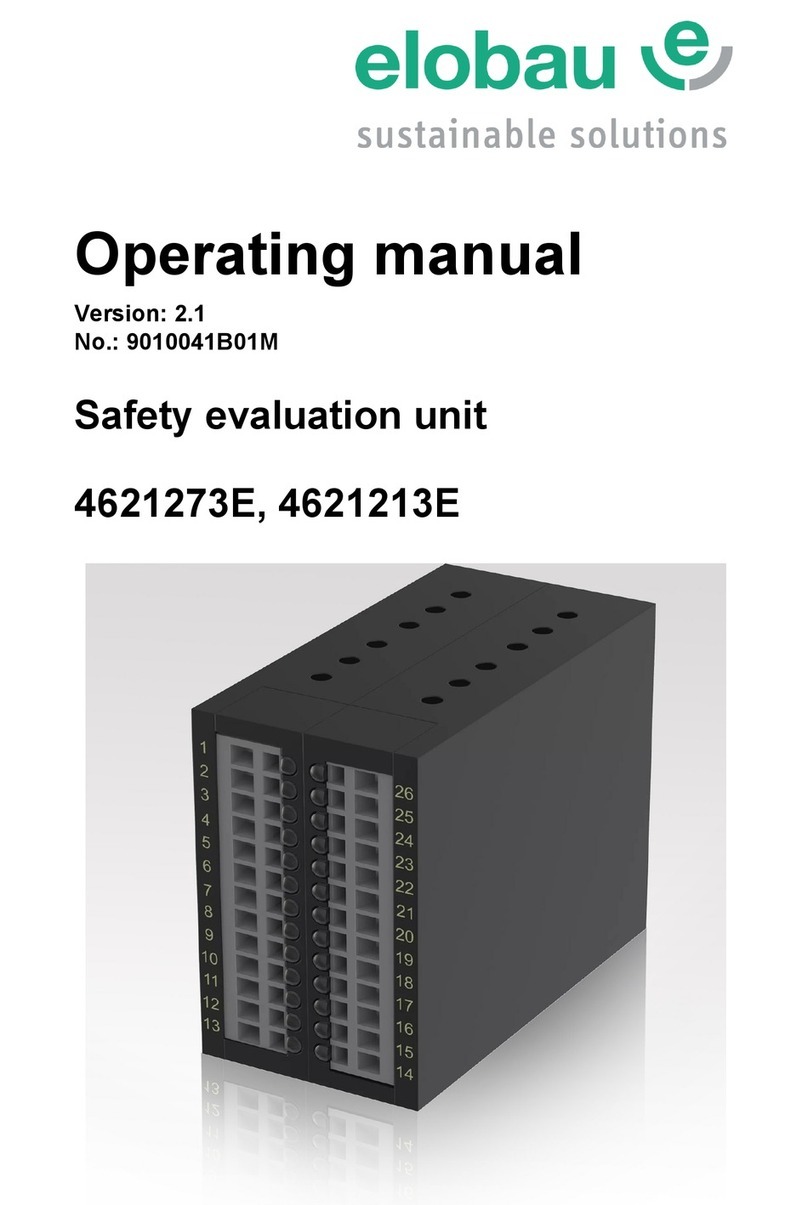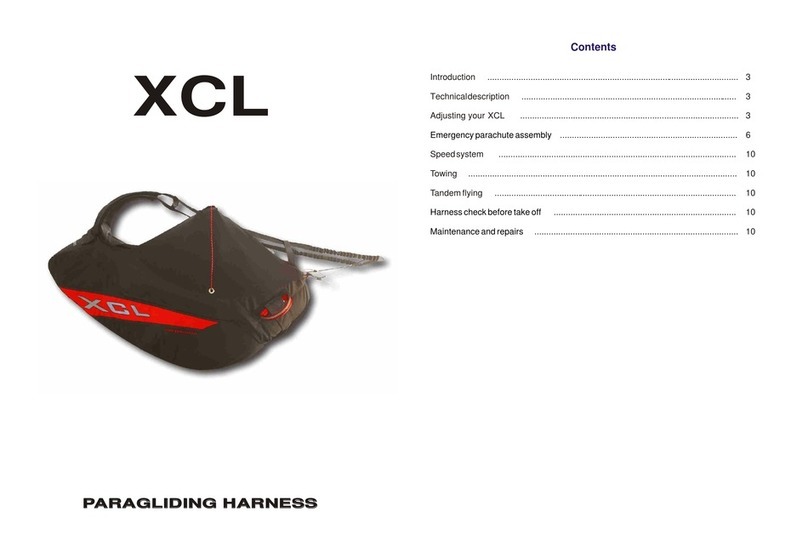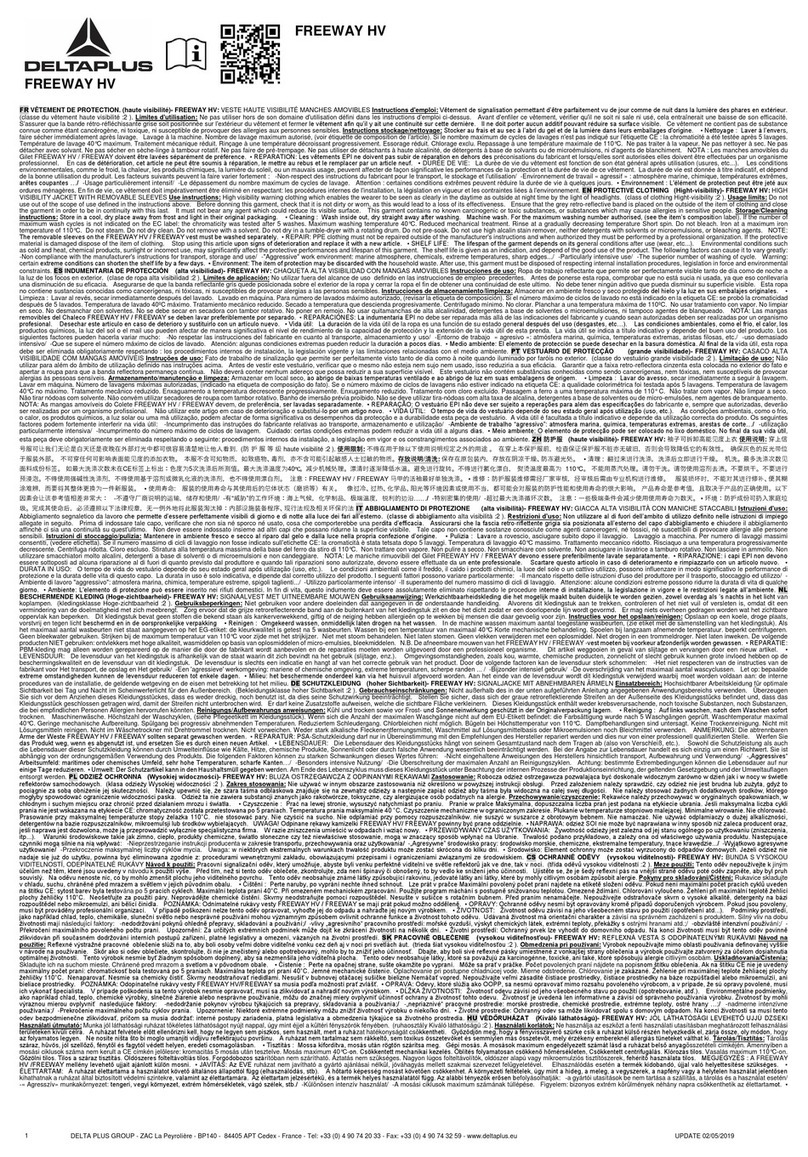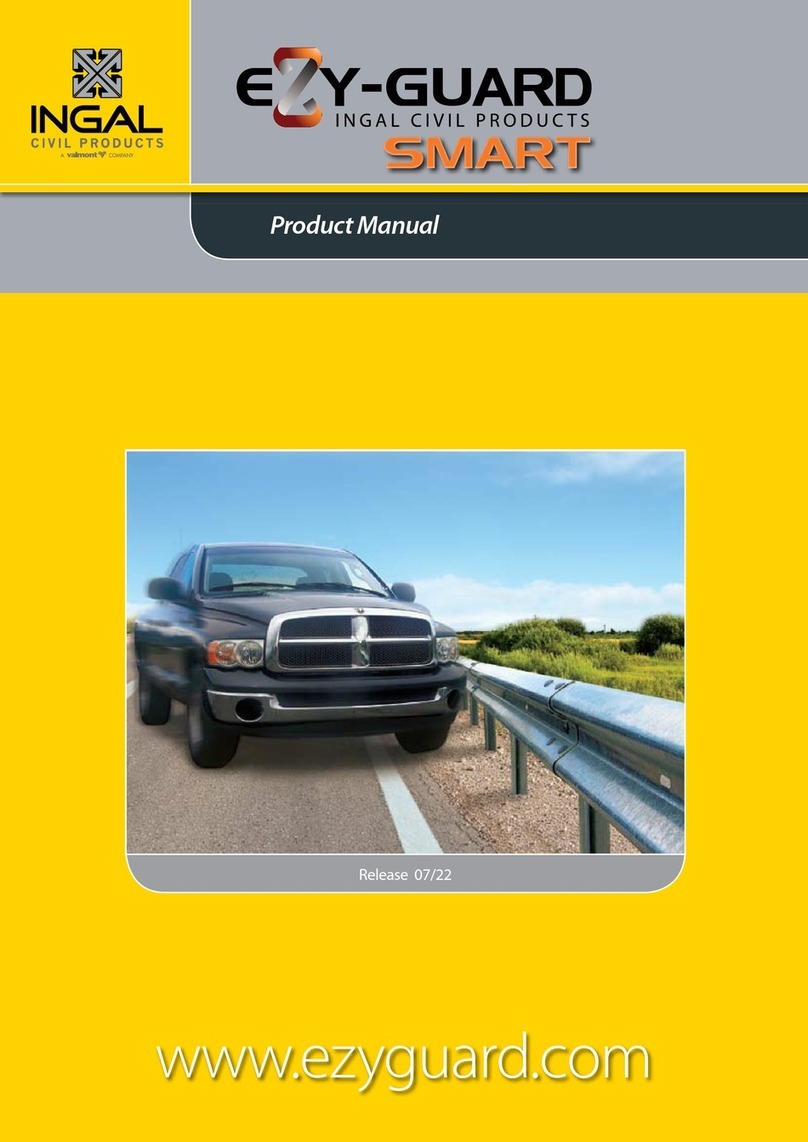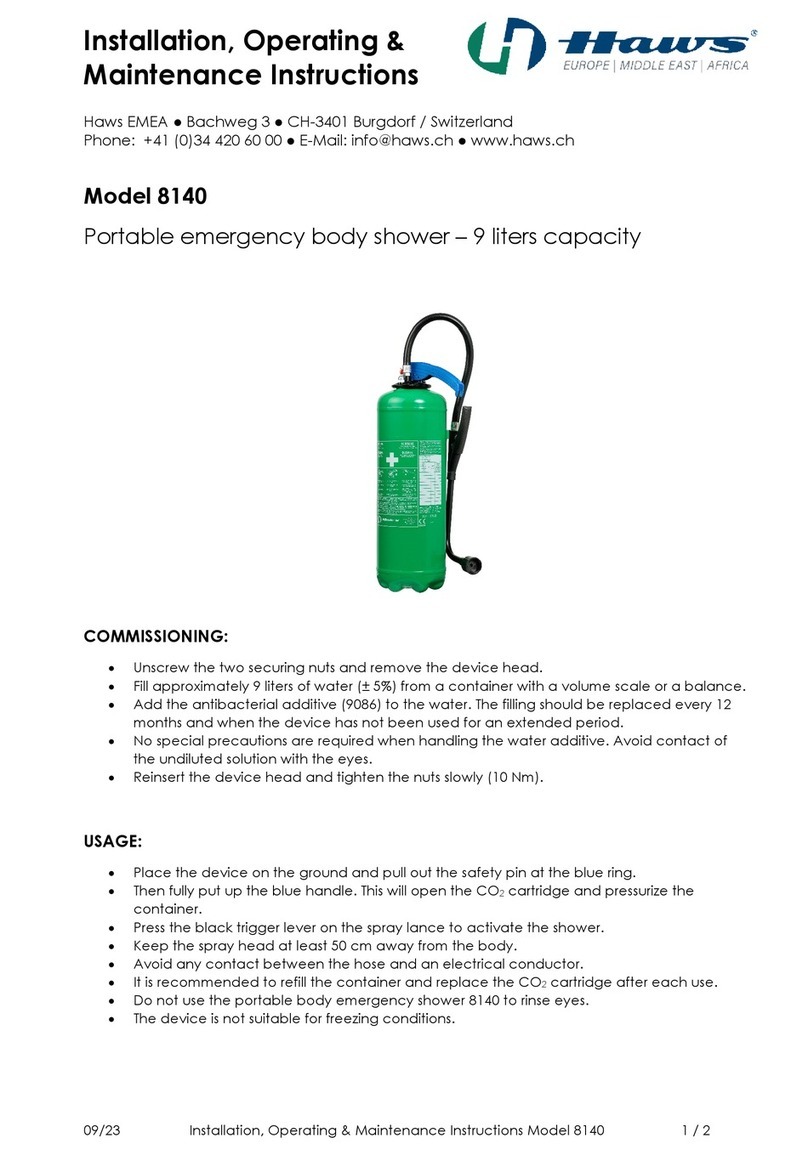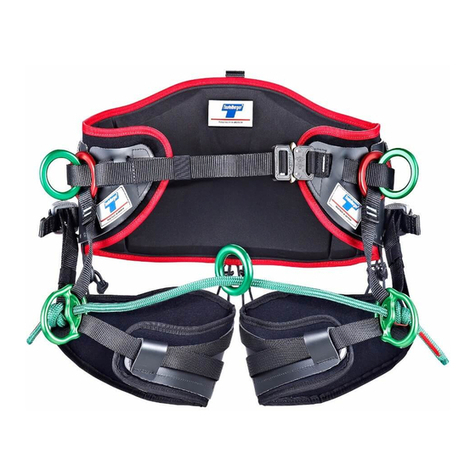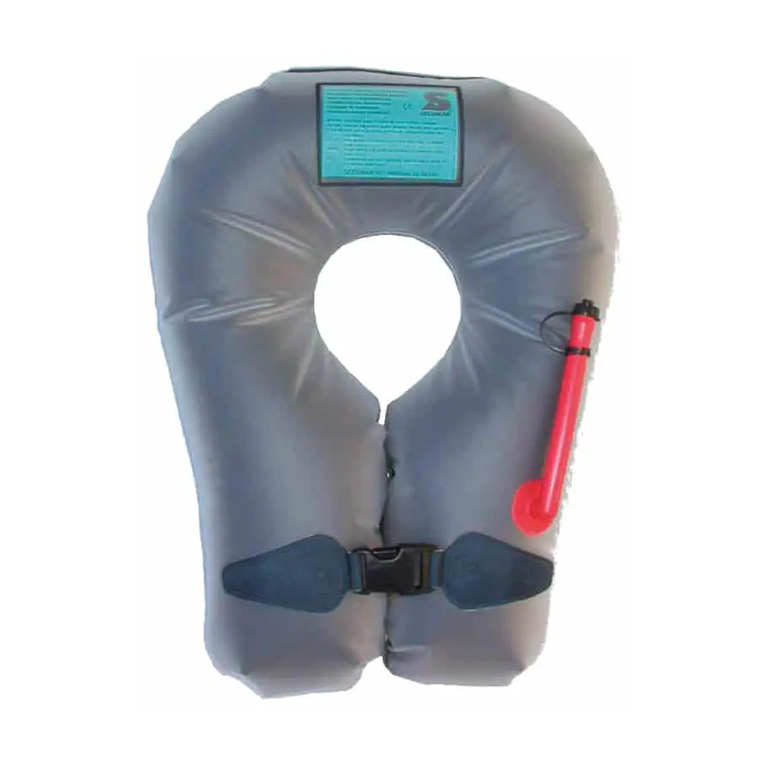
8540571 - 25/08/2016 - Rev.15
PHOTOELECTRIC
SAFETY
BARRIER
VISION VX
INSTALLATION USE AND MAINTENANCE
INDICE
INTRODUCTION...................................................................................................................2
NEW SAFETY PARAMETERS FOR TYPE 2 BARRIERS AND MANDATORY LABELLING.......3
OPERATION .........................................................................................................................4
INSTALLATION.....................................................................................................................5
POSITION......................................................................................................................................6
MASTER/SLAVE POSITIONING...................................................................................................6
SAFETY DISTANCE CALCULATION............................................................................................8
VERTICAL POSITION OF THE BARRIER....................................................................................9
HORIZONTAL POSITION OF THE BARRIER ........................................................................... 10
ELECTRICAL CONNECTIONS .................................................................................................. 11
EMITTER CONNECTIONS......................................................................................................... 12
RECEIVER CONNECTIONS...................................................................................................... 12
WARNINGS REGARDING THE CONNECTION CABLES......................................................... 13
CONFIGURATION AND OPERATION MODES......................................................................... 19
K1/K2 EXTERNAL CONTACTORS CONNECTION................................................................... 20
MULTIPLE SYSTEMS ................................................................................................................ 20
USE OF DEFLECTION MIRRORS............................................................................................. 21
DISTANCE BETWEEN REFLECTING SURFACES .................................................................. 22
MECHANICAL ASSEMBLY AND OPTICAL ALIGNMENT......................................................... 23
OPERATION AND TECHNICAL DATA................................................................................24
SIGNALS..................................................................................................................................... 24
TEST FUNCTION ....................................................................................................................... 26
OUTPUT STATUS ...................................................................................................................... 27
TECHNICAL SPECIFICATIONS................................................................................................. 28
DIMENSIONS......................................................................................................................30
CHECKOUTS AND MAINTENANCE...................................................................................32
VERIFICATION OF BARRIER EFFICIENCY ............................................................................. 32
TROUBLESHOOTING................................................................................................................ 33
SPARE PARTS....................................................................................................................36
GUARANTEE ......................................................................................................................37



















